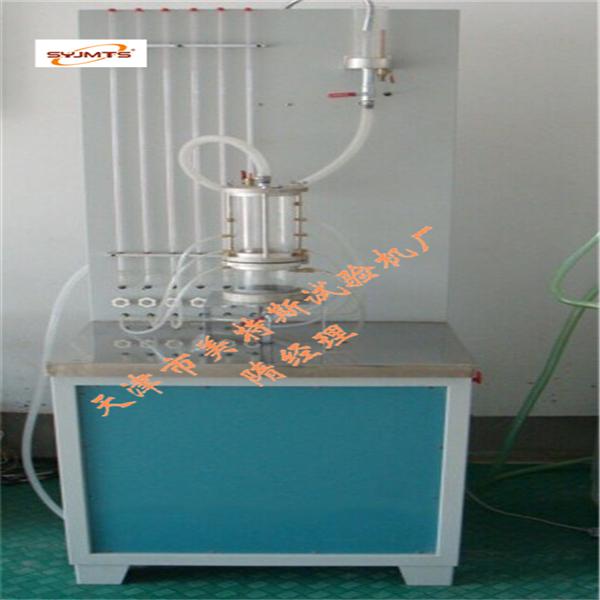Geosynthetics Clogging Tester
TSY-15 Model
One,
Geosynthetics Clogging Tester
Application Scope
Designed for geosynthetic filter testing, it evaluates the permeability coefficient and ratio of soil and geotextile under specific hydraulic conditions. This device is used to determine the amount of silt retained by the geotextile, helping to assess whether a geosynthetic material can be effectively used as a filter layer without causing clogging.
The test involves placing an alloying material on both sides of the infiltration clamp and using organic material in the middle to seal. The system is efficient, allowing for quick and easy sample loading and unloading.
Two,
Geosynthetics Clogging Tester
Complies with standards such as JTG E50-2006 T1145 and SL/T 235-2012.
Three,
Geosynthetics Clogging Tester
Technical Specifications
1. Inner diameter of the test tube: Ф100mm
2. Soil sample thickness: 100mm
3. Screen aperture: 6mm
4. Inner diameter of the test tube: 8mm
5. Measuring plate graduation value: 1mm
6. Power supply: 220V, 50Hz
7. Dimensions: 650×750×1900mm (L×W×H)
8. Weight: 125kg
Four,
Geosynthetics Clogging Tester
Testing Procedure
1. Sample preparation: Follow the guidelines outlined in T1101–2006.
2. Sample size and quantity: The sample size should match the permeameter dimensions. The number of samples depends on the test configuration and the number of fabric layers in the filter design.
3. Weigh the geotextile sample before testing, accurate to 0.01g.
4. Soil preparation: Air-dried soil is sieved to remove particles larger than 5mm.
5. Test water: Use degassed water at a temperature 3°C to 4°C higher than room temperature.
6. Place the geotextile and screen into the holding device and seal them securely.
7. Load the soil sample to a height of 100mm. For loose soils, use a funnel to level the soil; for dense soils, compact in layers while avoiding blockage of the piezometer inlet.
8. Saturate the soil sample by slowly introducing water from the bottom. Control the inlet head to less than 25mm until the top surface is covered. Vacuum pumping may be used to accelerate saturation.
9. Adjust the water level to achieve a hydraulic gradient of 1.0 and monitor pressure tube readings.
10. Once stable, open the outlet valve and allow water to flow through the sample.
11. Measure the water level and seepage every hour for 24 hours, recording time and temperature. If readings are unstable, extend the observation period.
12. After testing at i=1.0, increase the gradient to i=2.5, i=4.0, and i=10.0, ensuring stability and at least 1.5 hours of flow at each level. Repeat steps 10–11 when i=10.0 is reached.
13. At the end of the test, carefully remove the geotextile, clean off any residual soil, and weigh the total mass after drying, accurate to 0.01g.
Five,
Geosynthetics Clogging Tester
Test Report
The report should include:
1. Sample name, specifications, and model
2. Description of the soil condition
3. Date of the test
4. Number of fabric layers during the test
5. Gradient ratio and its variation over time
6. Silt content per unit volume of the sample
7. Any deviations from standard procedures
Geosynthetics Clogging Tester Image: 
Surge Protector Power Strip,Smart Power Strip,Outdoor Power Strip,Usb Power Strip
Yang Guang Auli Electronic Appliances Co., Ltd. , https://www.ygpowerstrips.com